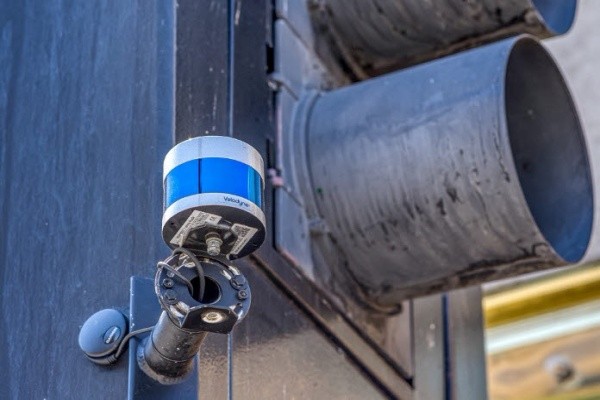LiDAR (Light Detection and Ranging) sensors are seen as a very important sensor along with cameras and radars to realize complete autonomous driving. It shoots laser beam and accurately detects and distinguishes objects on the road. The only issue that stands in the way is its expensive price compared to cameras and radars. This is the reason why Tesla is working on realizing complete autonomous driving without having to use LiDAR sensors.
Despite its expensive price, LiDAR sensor is a key element that is needed to raise level of completion of autonomous driving technology. Even Mobileye, which is a leader in camera-based autonomous driving technology, stated its opinion at CES 2021 that autonomous cars for consumers need at least one LiDAR sensor and a radar.
LiDAR sensors are not only used for mobility that includes autonomous vehicles. They can also be utilized to materialize smart cities and make operation of signals more efficient by supporting operation of autonomous vehicles and understanding traffic situations. They can also help with pedestrians’ safety.
It is expected that demands for LiDAR sensors that are used for smart cities will rapidly increase as development of autonomous driving technology meshes with expansion of ITSs (Intelligent Traffic System). According to a market research company MarketsandMarkets, the global ITS market is expected to grow from $17.9 billion this year to $36.5 billion in 2025 at an average annual rate of 15.3%.
Velodyne Lidar, the leader in the global LiDAR sensor market, and University of Nevada’s Nevada Center for Applied Research issued a white paper on “Roadside LiDAR for Making Traffic Infrastructures Smart and Safe”. Their white paper includes their studies based on Velodyne’s LiDAR sensors that show that LiDAR sensors improve safety of pedestrians and reduce number of accidents and therefore make use of autonomous cars possible.

According to the National Highway Traffic Safety Administration, one pedestrian gets killed every 88 minutes. This translates to 16 and 115 pedestrians in one day and one week respectively. In 2017, 37,133 people were killed from car accidents and about 6,000 of them were pedestrians.
Velodyne installed its LiDAR sensor “Ultra Puck” to traffic signals and also linked the sensor to RRFBs (Rectangular Rapid Flash Beacon). By utilizing data collected by Ultra Pucks, the company analyzed whether it was able to analyze traffic volume, manage congestion, and improve safety of pedestrians.
Velodyne stated that its LiDAR sensors were able to support autonomous cars with connected car features and improve safety and traffic. It emphasized that LiDAR sensors were able to trace movements of cars, pedestrians, and wild animals and prevent risks of accidents by notifying drivers in advance. They are also able to detect jaywalking and send warning messages to drivers.
The company also stated that LiDAR sensor-based technology has more advantages than camera-based technology. A camera is not able to recognize the subject in an environment with low level of light and it can cause a concern for invasion of personal privacy. On the other hand, a LiDAR sensor is less affected by level of brightness and weather compared to cameras and creates 3D data that guarantees one’s anonymity.
The company’s Ultra Puck LiDAR sensor’s performance is also excellent. It has greater than 95% accuracy in recognizing cars and 99.5% accuracy in detecting crosswalks.
“LiDAR sensors are able to monitor congestions on roads and make roads that are able to analyze collision risks possible.” said Carlos Cardillo who is the director of the Nevada Center. “They can exchange data with connected cars and support applications made for preventing collisions.”
Jon Barad, who is the vice president of Business Development at Velodyne, said that the Nevada Center is conducting studies on ideal smart city that can greatly improve traffic safety and lessen risks on roads and that Ultra Puck LiDAR sensor can certainly help building traffic infrastructures that are smarter and safer.
Staff Reporter Park, Jinhyung | jin@etnews.com